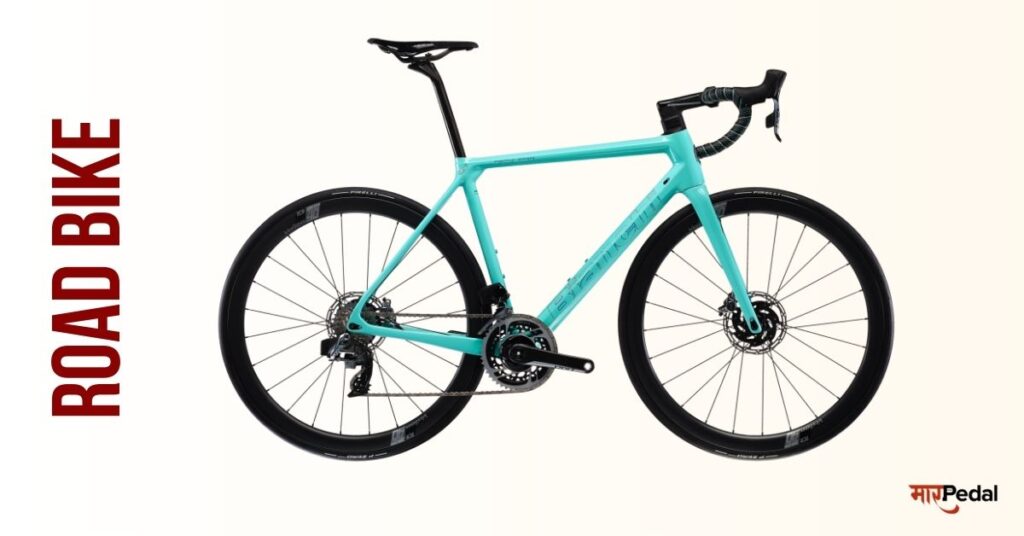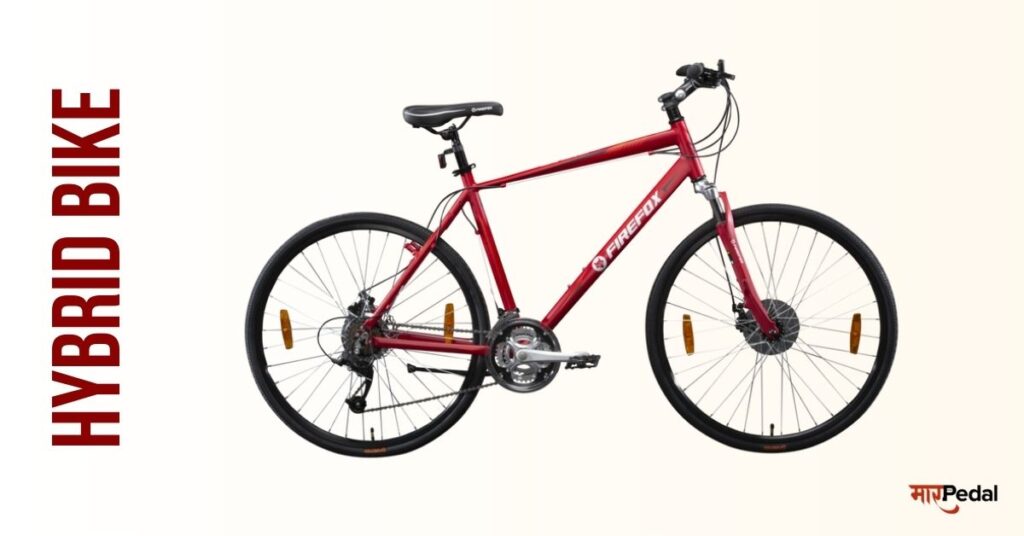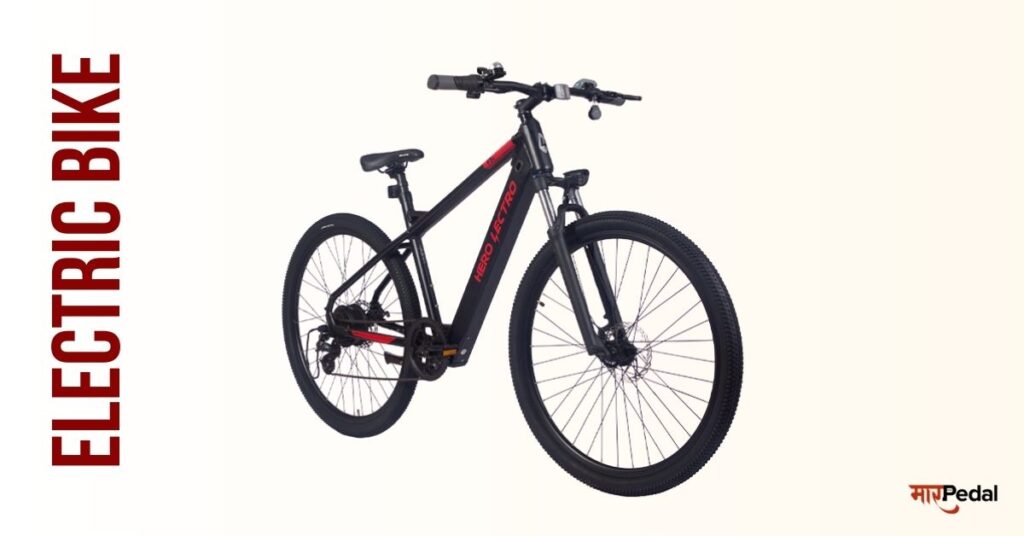
Cycling is one of the most popular forms of exercise and transportation worldwide. It not only helps in staying fit and healthy but also reduces carbon footprint.
Cycling also helps with exploring new places, meeting new people, and experiencing different cultures.
But did you know there are different types of cycles designed for different purposes?
In this article, we will talk about the types of cycles in India, what makes them unique, and what activities they are best for.
Cycling has been a popular activity for centuries. From the invention of the first bicycle in 1817 by Baron Karl von Drais to modern-day road, mountain, and electric bikes, the evolution of cycles has been remarkable.
Over time, the need for different types of cycles emerged, leading to the creation of specialized cycles for various activities.
1. Road Bikes

Source: bianchi.com
Road bikes are designed for high-speed cycling on smooth roads. They have narrow tires, lightweight frames, and drop handlebars for a more aerodynamic riding position. There are two types of road bikes:
1.1 Racing Bikes
Racing bikes are built for speed and performance. They have lightweight frames, narrow tires, and a low handlebar position that allows the rider to maintain a more aerodynamic posture. They are perfect for road racing, time trials, and triathlons.
1.2 Endurance Bikes
Endurance bikes are designed for long-distance cycling on paved roads. They have a more comfortable geometry, wider tires, and a more upright riding position. They are ideal for long-distance touring, commuting, and charity rides.
2. Mountain Bikes

Source: trekbikes.com
Mountain bikes are built to handle rugged terrain, steep inclines, and fast descents. They have wide, knobby tires, front and rear suspension, and sturdy frames. There are three types of mountain bikes:
2.1 Trail Bikes
Trail bikes are designed for all-around off-road riding. They have suspension, wide tires, and a comfortable riding position. They are perfect for beginners and intermediate riders who want to explore light to medium off-road terrain.
2.2 Cross-Country Bikes
Cross-country bikes are designed for speed and efficiency on off-road terrain. They have lightweight frames, narrow tires, and front suspension. They are ideal for racing, endurance riding, and long-distance off-road touring.
2.3 Downhill Bikes
Downhill bikes are built for high-speed descents on rough and steep terrain. They have full suspension, wide tires, and sturdy frames. They are perfect for advanced riders who enjoy extreme off-road riding and downhill racing.
3. Hybrid Bikes

Source: firefoxbikes.com
Hybrid bikes are a mix of road and mountain bikes. They are versatile, easy to ride, and perfect for everyday use. There are three types of hybrid bikes:
3.1 City Bikes
City bikes are designed for urban riding. They have a comfortable upright riding position, and wide tires, and often come with features like racks and fenders for carrying cargo.
3.2 Comfort Bikes
Comfort bikes are a type of hybrid bike that is designed for leisurely rides on paved paths and smooth roads. They have wider saddles and tires, providing a comfortable and stable ride.
3.3 Touring Bikes
Touring bikes are built for long-distance travel on paved and unpaved roads. They have a comfortable riding position, and wider tires, and often come with features like racks and panniers for carrying gear. They are perfect for exploring new places and having touring adventures.
3.4 Commuter Bikes
Commuter bikes are designed for daily transportation. They have a comfortable riding position, and wider tires, and often come with features like fenders, lights, and racks for carrying gear. They are perfect for commuting to work or school and running errands.
4. Folding Bikes

Source: decathlon.in
Folding bikes are designed for portability and convenience. They can be easily folded and stored in small spaces, making them perfect for city living, traveling, and commuting. They have smaller wheels and frames than traditional bikes, making them less stable at high speeds.
5. BMX Bikes

BMX bikes are designed for freestyle and stunt riding. They have small frames, narrow tires, and a single gear. They are perfect for riders who enjoy tricks, jumps, and flips.
6. Cruiser Bikes

Cruiser bikes are designed for comfortable and relaxed riding. They have wide tires, wide seats, and an upright riding position. They are perfect for casual riding and leisurely beach cruising.
7. Electric Bikes

Source: herolectro.com
Electric bikes are designed to assist the rider’s pedaling with an electric motor. They have a battery and motor system that provides power to the wheels. They come in various types, including road, mountain, and hybrid bikes. They are perfect for riders who want to cover longer distances, climb hills with ease, and reduce physical effort.
Conclusion:
Choosing the right type of bicycle is an important decision, as it can greatly affect your riding experience. By understanding the different types of cycles available, you can make an informed decision that meets your needs and preferences. Whether you’re looking for speed and efficiency or comfort and functionality, there’s a bike out there for you. So, get out there and ride!
FAQs
How many types of cycles are there?
The number of cycles is vast and varies across different contexts. In general terms, cycles refer to sequences of events that repeat regularly. This concept is applicable in numerous fields such as science, environment, economics, and social sciences. Each field has its own specific types of cycles, making it challenging to quantify them collectively.
What type of cycles are there in science?
In science, there are several types of cycles, each relating to different scientific disciplines. For example:
- Biogeochemical Cycles: These include the carbon cycle, nitrogen cycle, water cycle, and oxygen cycle, describing the movement of chemical elements through biological, geological, and chemical processes.
- Life Cycles: Found in biology, explaining the stages of growth and development in organisms.
- Astronomical Cycles: Such as the lunar cycle and solar cycle, describing celestial phenomena.
- Chemical Cycles: Including reaction cycles in chemistry.
Which type of cycle is best?
Determining the “best” type of cycle depends on the context and the criteria used for evaluation. For instance, in environmental science, the most efficient cycle might be considered the best. In the context of fitness, a bicycle that best suits an individual’s needs would be the best. It is a subjective matter that varies based on the specific application or purpose.
What cycles are there in the world?
The world encompasses a multitude of cycles, ranging from natural processes to human-made systems. Some of the key examples include:
- Environmental Cycles: Like the water cycle, carbon cycle, and nitrogen cycle.
- Economic Cycles: Such as business cycles involving periods of economic expansion and contraction.
- Cultural and Social Cycles: Including generational changes and societal trends.
- Geological Cycles: Like the rock cycle and tectonic cycles.
What are the 4 Earth cycles?
The four major Earth cycles often referred to are:
- The Water Cycle: Involves the continuous movement of water on, above, and below the surface of the Earth.
- The Carbon Cycle: Describes how carbon is exchanged between the biosphere, geosphere, hydrosphere, and atmosphere.
- The Nitrogen Cycle: Details the process of nitrogen being converted into multiple chemical forms as it circulates among the atmosphere, terrestrial, and marine ecosystems.
- The Rock Cycle: Explains the formation, breakdown, and reformation of a rock as a result of sedimentary, igneous, and metamorphic processes.
What are the 3 cycles on Earth?
Three fundamental cycles on Earth often highlighted are:
- The Water Cycle: It encompasses the processes of evaporation, condensation, precipitation, and runoff, connecting the Earth’s oceans, land, and atmosphere.
- The Carbon Cycle: This cycle is critical for life, involving the movement of carbon among the Earth’s atmosphere, ocean, ecosystem, and geosphere.
- The Nitrogen Cycle: It is essential for all life forms, as nitrogen is a key component of amino acids and nucleic acids; the cycle includes nitrogen fixation, nitrification, and denitrification.






